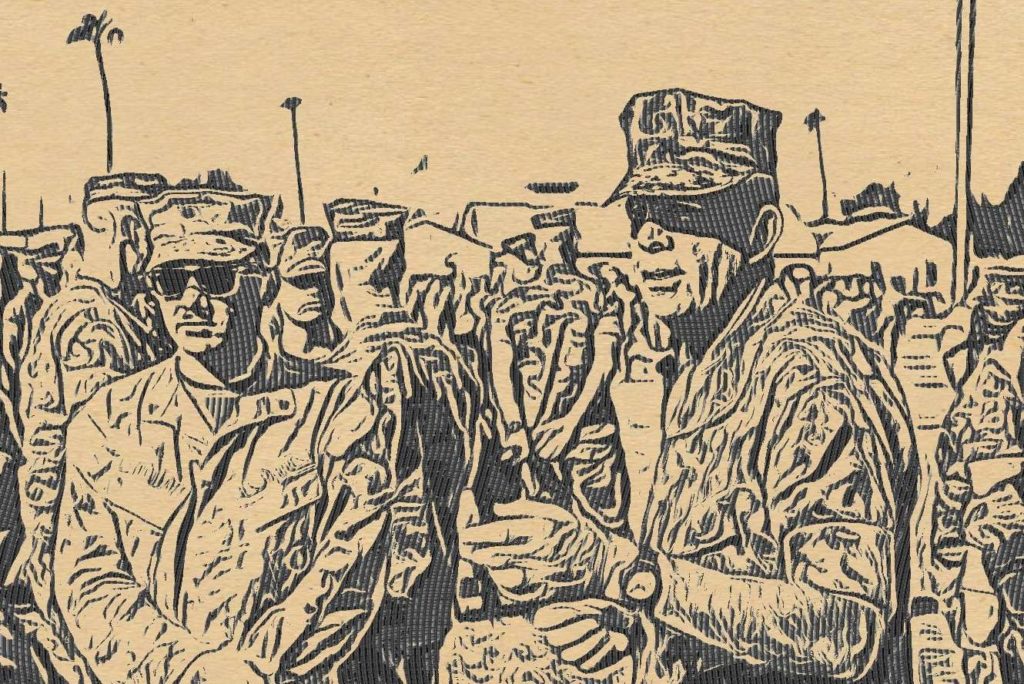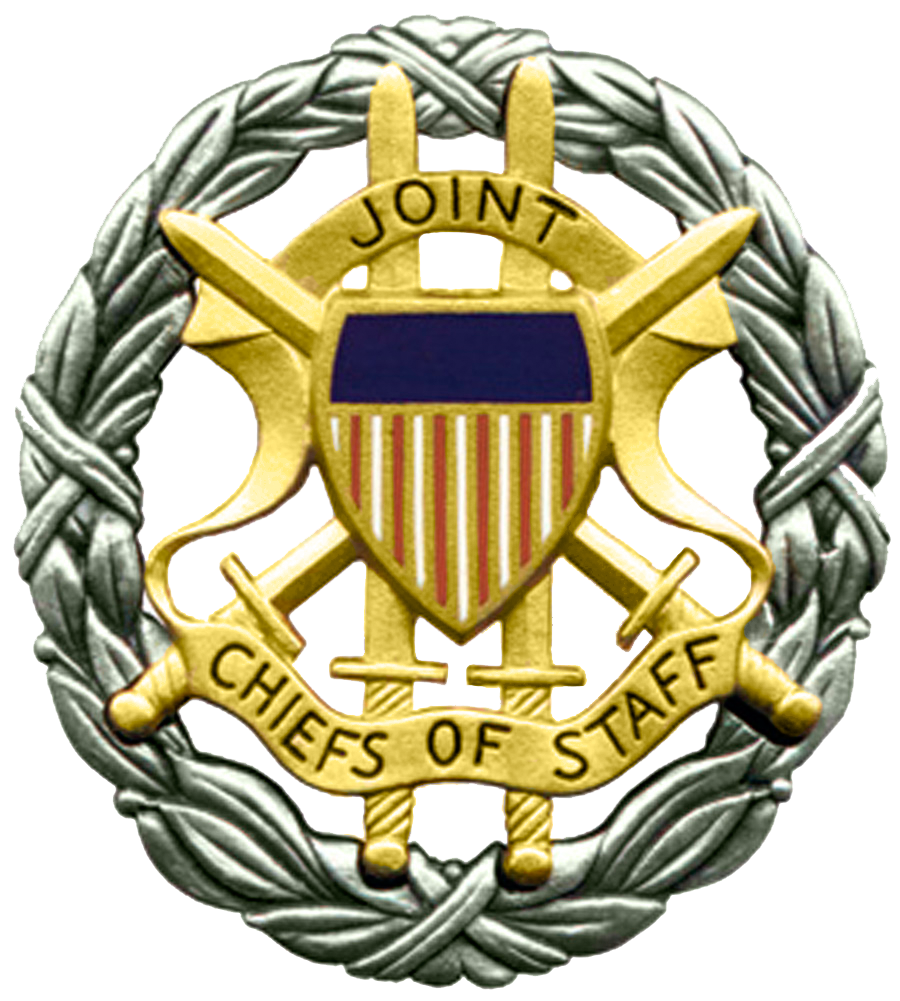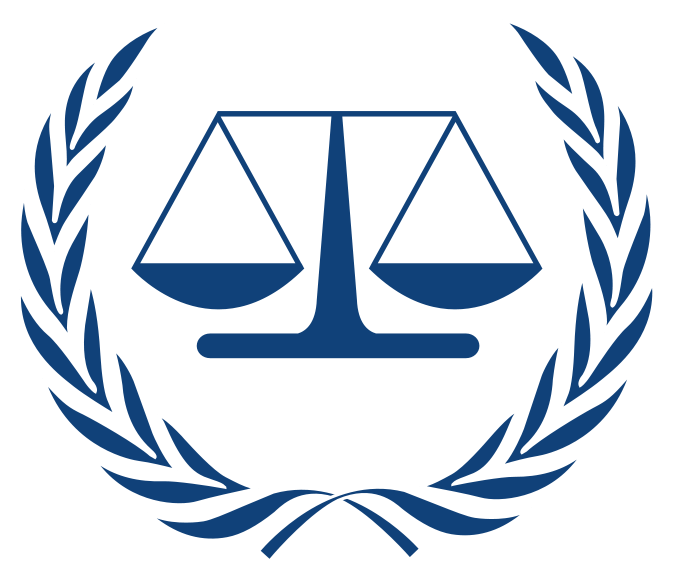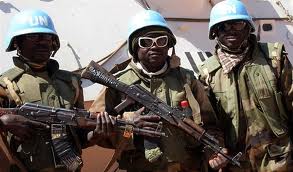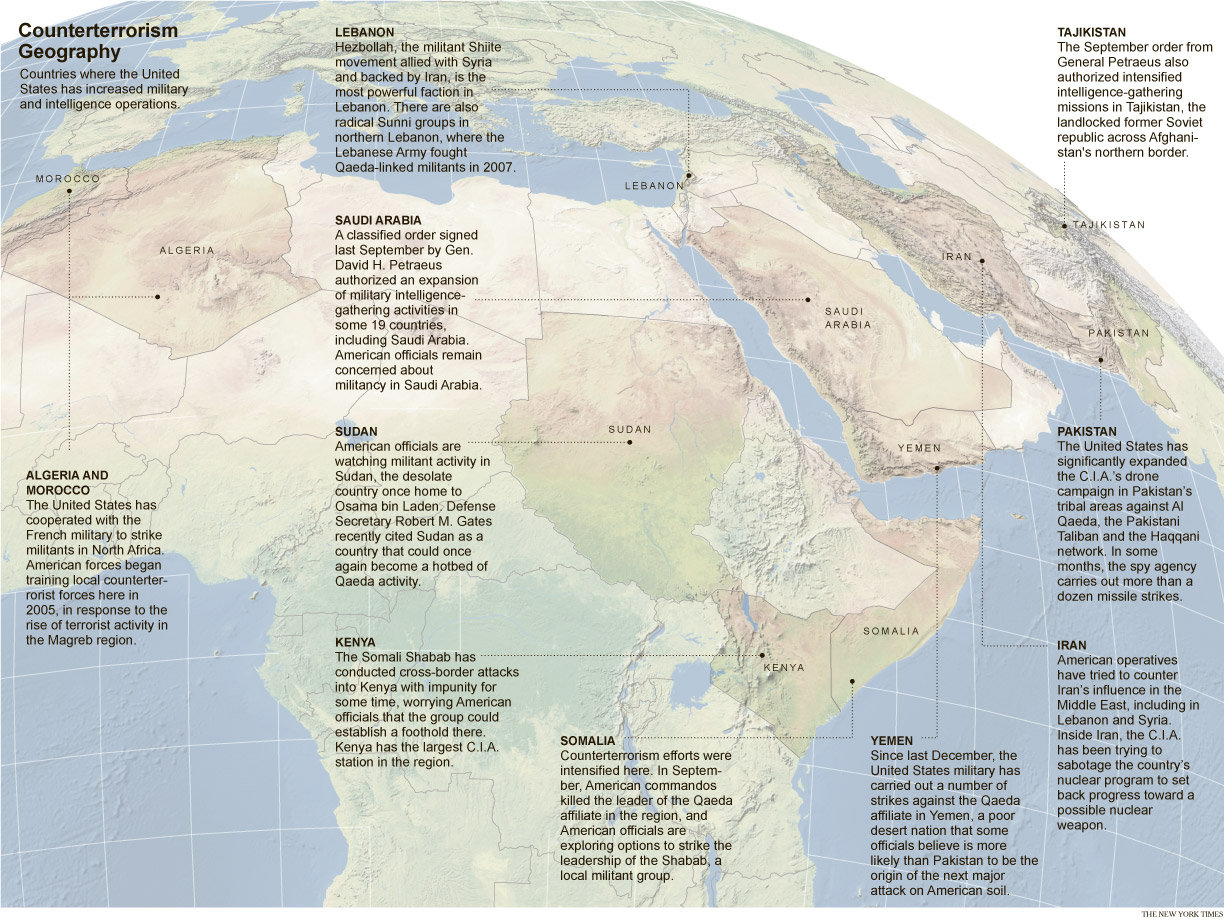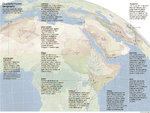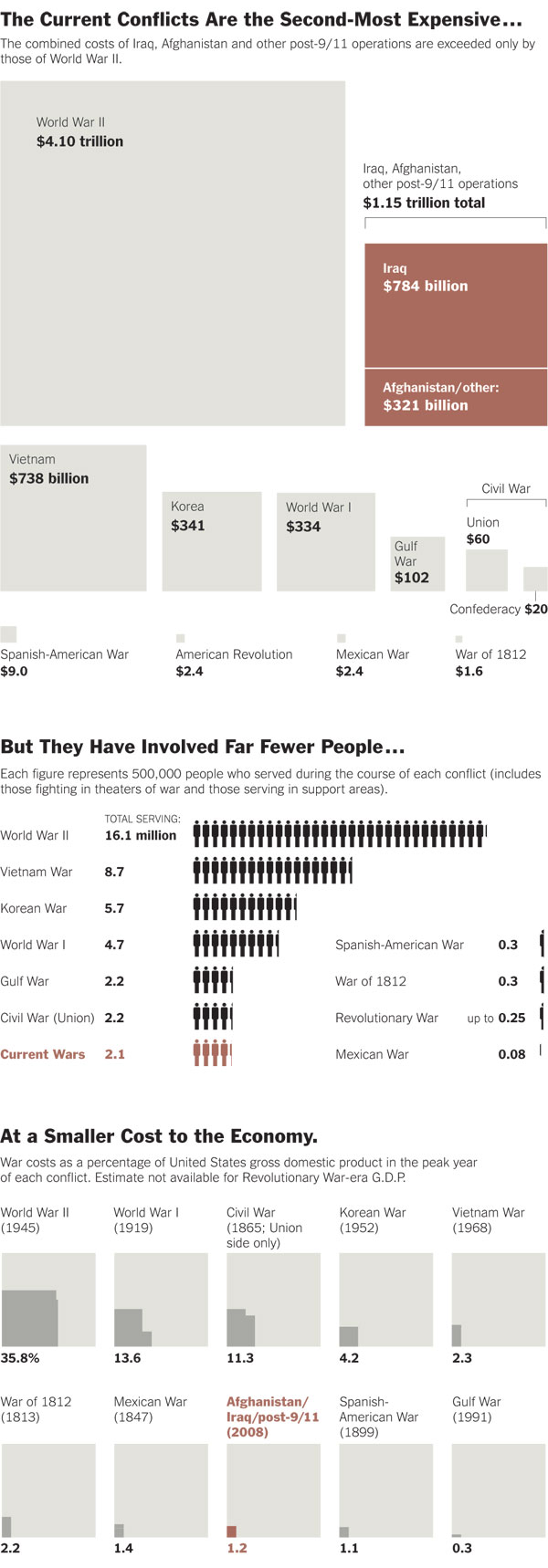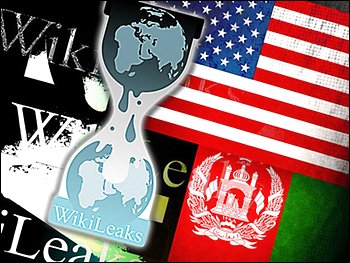[Note: This is the first published reference to the concepts that became the SysAdmin and Leviathan forces]
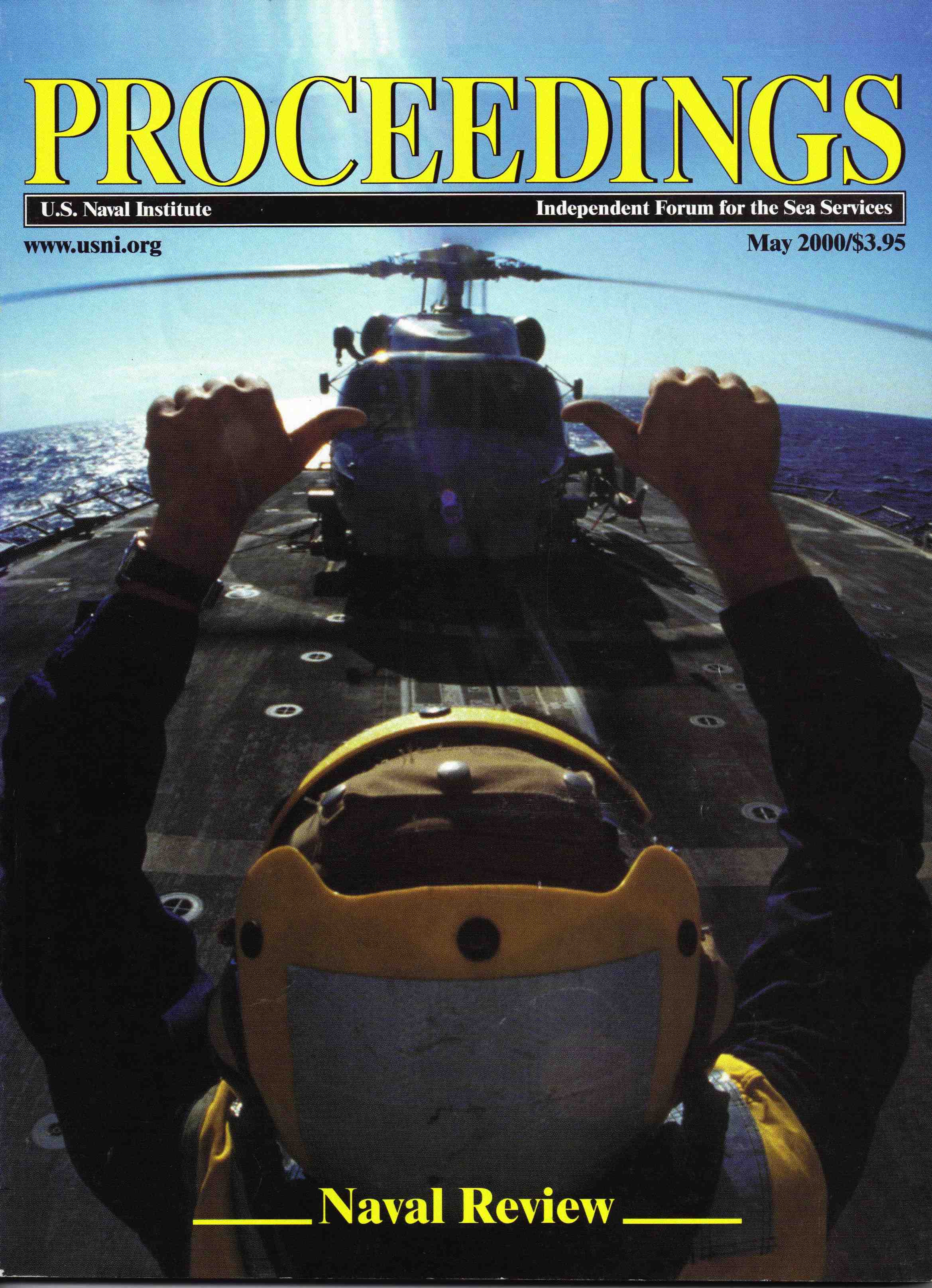
Life After DoDth or:
How the Evernet Changes Everything
by
Thomas P.M. Barnett
COPYRIGHT: The U.S. Naval Institute, 2000 (May issue, pp. 48-53); reprinted with permission
The relevance of DoD has declined steadily since the end of the Cold War. Coming to grips with its passing won't be easy, but the Navy is working through the five stages of grief and toward a future in cyberspace.

First the unpleasant truth:
the Department of Defense's raison d'être died with the Cold War. No one likes to talk about it, but that's what happened. Created in the National Security Act of 1947, the DoD is wholly a creature of what eventually became the United States' hair-trigger during the nuclear standoff with the Soviet Union. Prior to that, we basically stuck to the Constitution's mandate to "provide and maintain a Navy" on a constant basis and to "raise and support Armies" as the situation demanded.
The Cold War's odd combination of nonwar (we never fought the Soviets) and nonpeace (we constantly mixed it up in proxy conflicts and arms races) forced the merging of our republic's two historically distinct security roles:
- Maintain and protect our economic networks with the outside world
- Defend against direct threats to our national territory.
The two functions became one in the Cold War strategy known as containment, when we decided to extend our sense of territorial integrity to the entire Free World, thus subordinating economic rationales to security imperatives.[1]
But that strategy died with the start of the globalization era. Now, security rationales are subordinate to economic imperatives. So why haven't we seen, as Joseph Nye might say, the "return of history" in the U.S. national security establishment?[2] Why haven't we repealed the 1947 National Security Act and thrown away this outmoded unification of two defense concepts that constantly compete against one another—to the detriment of both?
I'm not saying jointness is a bad idea. I'm saying it's the worst possible idea, precisely because it papers over the huge functional cleavages that logically separate the Army and Navy, leaving the Air Force to its own sad form of service schizophrenia.[3]
But I'm getting ahead of myself. If we are going to come to grips with this death in the family, we will need to go through all the phases Elisabeth Kubler-Ross laid out in her seminal book, On Death and Dying:
- Denial and isolation
- Anger
- Bargaining
- Depression
- Acceptance (followed by Hope).[4]
The good news is that we've spent most of the 1990s flailing away at the first three; we're beginning to see symptoms of the fourth (depression, otherwise known as the shipbuilding and conversion account); and acceptance (e.g., the Secretary of the Navy's search for a "transformation strategy") seems just around the corner. And hope? That's the Evernet part—a back-to-the-future outcome that represents the Navy's salvation and return to its historical roots. But before we jump ahead, let's review the purgatory that was the 1990s.
Denial & Isolation
For this part, I'll use Kenneth Waltz's "three images" framework from his influential 1954 study, Man, the State and War, in which he investigated the causes behind interstate war across three distinct levels (see Figure 1):[5]
- Individual
- State
- International system.[6]
In the Cold War, things were fairly straightforward, as both the international system (through blocs) and individuals (through ideologies) were kept in strict subordination to the state-centered superpower conflict. So when the Pentagon looked abroad, all it saw was "us" and "them" states, with that pesky nonaligned gang in between. The focus on states remains to this day. I call it the "Willie Sutton effect," after the famous bandit who, when asked why he robbed banks, replied, "Because that's where the money is." Nation-states have long served as the preeminent collection point (i.e., taxes) for collective security efforts (militaries), but that has begun to change.
The United States has not yet adjusted its state-centered defense policy to account for the two biggest security trends of the globalization era:
- Power and competition have shifted upward, from the state to the system (in the form of the global economy, culture, and communications grid).
- Violence and defense spending (e.g., small arms races, private security firms) have shifted downward, from the state to the individual.
Worldwide state defense spending and arms transfers are down dramatically from their 1987 Cold War peaks, leaving the DoD in denial about its growing disintermediation from the global security environment—in other words, its almost complete irrelevancy to the rising market of system perturbations (e.g., financial crises) and its perceived impotence in responding to the booming market of civil strife. Meanwhile, other international and private organizations increasingly step in to provide the same sort of ground-floor chaos containment that was DoD's bread and butter during the Cold War.
Nothing signals DoD's growing isolation more than its continued insistence on focusing so much planning on the so-called rogues, who, when stacked on top of each other, don't amount to a hill of beans in this strategic environment of rapid globalization. And yet, what is the hot security topic as the new millennium dawns? National missile defense, of course!
So where can a military fit in this new global environment, where almost all the important crises are either too global or too local for most states to tackle with military force? In a world featuring both integrating globalization and dis-integrating localization, the great challenge facing governments is fostering compromises between the two, otherwise known as glocalization—adapting the local to the global in ways that improve the former's living standards. Naturally, this can be fairly contentious, with many societies resisting what Thomas Friedman calls "revolution from beyond."[7]
In short, glocalization is the containment of the globalization era—sort of a dot.communism, love it or leave it. If you have a hard time thinking of how DoD fits into a U.S. foreign policy focused on promoting this nebulous concept, then you're beginning to move into . . .
Anger
The best example of post-Cold War anger comes from the Department of the Navy, which became so mad after its "poor showing" in the Persian Gulf War that it immediately struck out in search of a post-Cold War vision. With the Soviet blue-water navy speeding toward the dustbin of history, it was Desert Storms for as far as the eye could see. Right?
Many of us "best and brightest" were thinking exactly that when we assembled in late 1991 for the Naval Force Capabilities Planning Effort, which eventually begat ". . . From the Sea." Faced with a system-level security environment in which the United States reigned supreme and a subnational one in which it seemed like all hell (i.e., ethnic bloodletting) was breaking loose, most of the assembled officers expressed disgust for the dilemma the Department of the Navy faced—namely, with sea control a given, it was either "influence events ashore" or wait for a peer competitor.
Not surprisingly, we chose the former and quickly replaced the Soviets with the best enemy we could get our hands on at the time—the Air Force. Given that Washington's way of using the Air Force for crisis response (bomb first, talk later) correlates best to the mini-Hitler type exemplified by Saddam Hussein and Slobodan Milosevic, the bureaucratic stage was set for a decade-long Navy-Air Force face-off on who could deliver the most crushing blow the fastest—or at least a sexy PowerPoint briefing "proving" the same.
The problem with our choice? Over the course of the 1990s, it became clear that "bolt from the blue" regional crises were hardly the norm. The large majority of DoD's crisis-response activity involved Somalia, Haiti, and the Balkans (not to mention the Saddam sequels), and not only weren't they bolts from the blue, not a single one involved an enemy of stature. Our one encounter with a "near peer" (China over Taiwan) was mere shadow boxing—a virtual conflict befitting a virtual age.
So, after redirecting itself to battling serious hegemons, the Navy spent the entire decade doing almost anything but. Meanwhile, the Marines chased their particular vision of the "three block war," and both Army and Air Force reconfigured to accommodate their increasingly robust military operations other than war (MOOTW) market shares.[8]
In short, the 1990s have left the Navy in a post-DoDth limbo: it buys one navy (high-tech, which drives down numbers) while operating another (global presence force, which needs big numbers).[9] By trying to cover both bets while competing with the Air Force on rapid response, the Navy has channeled its post-Cold War anger into a negotiating stance on force structure it cannot sustain, which gets us to . . .
Bargaining
The contours of the Navy's bargaining are best captured by Hank Gaffney's notion of the "Three-Way Stretch," which basically states that the U.S. military, and the Navy in particular, is killing itself trying to cover all three slices of DoD's now highly fragmented market.[10] Unable to move beyond DoD's functional demise, the Navy ends up replicating its death spiral, and to me, that's throwing the baby out with the bathwater.
Using Waltz's three levels as touchstones, I paraphrase Gaffney as follows:
- On the system level, the Navy works hard to maintain its high-tech edge against would-be peer competitors capable of generating global instabilities. This is the future force of "silver bullets" and networked technologies, featuring deep strike and emphasizing speed. It is your basic research-and-development Navy, and it's very expensive.
- On the state level, the Navy struggles to maintain its bread-and-butter warfighting edge against would-be rogues capable of triggering regional instabilities. This is the surge force full of sealift and blue-green power projection, featuring anti-antiaccess stratagems and emphasizing inevitability. It's your Navy held to the two-major-theater-war standard, and it takes a lot of care and feeding.
- On the individual level, the Navy labors mightily to maintain its operational edge against a world of so-called transnational actors capable of instigating all manner of civil strife and nefarious activities. This is the presence force of many platforms and MOOTW skills, featuring military-to-military ties and emphasizing operations tempo. It's your see-the-world Navy, and it wears out faster than you think.
If all that sound like too much, it is. The Navy's stretch not only leaves the institution increasingly exhausted but also drives its never-ending search for a grand unifying theory that will somehow result in a high-tech navy of robust projection capabilities and manned by a smaller, smarter workforce that is easier to retain. Network-centric warfare is the theory du jour, but it will never go the distance so long as it aspires to be all things to all threats.
Just tracking the title inflation of the Department of Navy's white paper gives you all the macrostrategic data you need to make the case on overreach:
- First it was just ". . . From the Sea," which seemed simple enough. We'd be a power-projection navy that influenced events ashore.
- Then it ballooned into "Forward . . . From the Sea," lest anyone think we weren't still the be-everywhere-all-the-time navy.
- Now we pump up the volume still more to "Power and Influence . . . From the Sea," just to make it clear that we'll remain hypertech, too.
But as any psychologist will tell you, the Superman Syndrome leads to overload, then to breakdown, and finally to . . .
Depression
It is depressing to be a sailor today—and DoD has the polling data to prove it. Maritime service is simply too draining, too demanding, and not enough fun. Worst yet, we are not attracting—much less keeping—the best and the brightest needed to bring network-centric warfare to reality.
A key reason it is becoming so hard to attract new talent to the Navy is that young people increasingly perceive it as a career cul-de-sac. They want to be part of something that's growing toward a brighter future, and they just don't see one in the works for the Navy. And they're right.
Eventually, the Navy will succumb to the strain of the three-way stretch, and when it does, it will be forced into the same box it climbed into in ". . . From the Sea"—a state-focused crisis-response strategy. What's wrong with that? Plenty.
Harkening back to Waltz's three levels, power and competition migrate upward from the state to the system, and violence and defense spending migrate down to the level of the individual. This pushes the nation-state more into the role of a relationship and information broker and away from the industrial era's resource and power brokering, signaling the advent of what Richard Rosecrance calls the "virtual state."[11] Or, as Thomas Friedman says, globalization isn't about bigger or smaller government but about better government.[12]
But no matter how you describe it, future conflicts won't be concentrated at the level of nation states but rather at the supranational and subnational levels, where globalization and localization collide. Sure, some Lenin-after-next may figure out how to turn all that individual anger at the system into political revolution, and yes, the information age is likely to spawn the Next Ideology, just as the Industrial Age did [13]—but these new political movements won't concentrate their strategies at the nation-state level but rather will aim above (international organizations seeking new rule sets for the global economy) or below (microstate collections of individuals looking to drop out and go it alone).
So what happens to the Navy and its sister services? You'll see a clear division of labor emerge, with each given its own corner of DoD's highly fragmenting market:
- The Air Force becomes the future high-tech force that rules air, space, and cyberspace and plays "system administrator" to the global security environment.
- The Navy and Marine Corps become the classic surge crisis-response force that separates belligerents in state-on-state war and punishes would-be hegemons who break the rules.
- The Army becomes the boots-on-the-ground, day-to-day, low-tech presence force that works in those offline regions where backward types still fight over little bits of land.
Sound okay?
Not by my way of thinking, for I see the Air Force's market as booming, the one on which the U.S. government focuses a lot of attention trying to keep virtual systemic crises—usually triggered by financial tumults—from blossoming into real conflicts among states. In comparison, although the Army's market probably won't grow, it is historically stable. Globally there have been a good three to four dozen conflicts every year since World War II that generate 1,000 or more casualties.[14] And while these conflicts are real, U.S. interests tend to be virtual, affording us the flexibility to choose the ones we want to deal with (e.g., Bosnia and Kosovo) and to turn a blind eye to those we don't (e.g., Rwanda and the Congo).
Meanwhile, the Navy and Marines' market will slowly dry up. The early 20th century's high volume of state-on-state warfare will not carry over into the 21st. Nuclear weapons ended great power-versus-great power warfare back in 1945, and as John Keegan predicts, the future belongs far more to civil strife than traditional war.[15]
But there is hope, especially once you move toward . . .
Acceptance
Security in the future will a lot broader than anything a one-stop DoD can provide. The signs are all around us:
- The biggest system instability of the 1990s—the global financial crisis of 1997-98—showed who is really in charge of deterring international chaos: the Department of the Treasury, the Federal Reserve, and the International Monetary Fund.[16]
- The Y2K Problem, described as the biggest global management challenge since World War II, saw DoD play a minor supporting role to corporate turnaround specialist John Koskinen's star turn, signaling a new era in government-industry cooperation on computer security.[17]
- The G-7 expands to G-8 and now to G-20, leaving the United Nations, NATO, and the rest of the politico-military alliance system in its wake while demonstrating the supremacy of economics in creating summit opportunities today (transforming arms control into the "Waldo" of the international scene).
In general, more and more of DoD's assumed "lesser includeds" (terrorism, computer hacking, electronic warfare) are being reclassified by an increasingly net-aware Washington as global law enforcement areas, with the relevant federal agencies aggressively building networks of international cooperation, buttressed by a worldwide explosion in private security firms. Increasingly, when one scans the international security environment's to-do list, DoD looks like a cyber-age dinosaur.
I see merit in the efforts of the Secretary of the Navy and others to plot out a "transformation strategy," but transform to what? Too much of what I see coming out of the Pentagon today seems hopelessly focused on future high-tech shootouts among trade-bloc-toting hyperpowers. I'll hold open the possibility that Globalization II (1946 and counting) could disintegrate in ways similar to Globalization I (1870-1929), but we need a game plan that covers both the mother-of-all-global-financial-meltdowns scenario and the far greater likelihood that it is the international security environment itself that is being revolutionized and not merely DoD's increasingly irrelevant tool kit.
Better yet, we need two separate game plans. Accept that notion—and with it the functional demise of DoD—and the Department of the Navy finally moves out from the Cold War's shadow and into the light of the globalization era. We are going to have to make the break sometime, so why not talk about it openly and plan ahead?
The Coming Evernet
The planet is undergoing a broad economic transformation that is loosely described as the rise of the New Economy.[18] This jarring makeover of virtually every business model we hold dear is exemplified by the astonishingly global spread of the Internet and e-commerce. But that is just the tip of the iceberg in DoD's path, for whenever economics changes, politics must follow.
The defining achievement of the New Economy in the globalization era will be the Evernet, a downstream expression of today's Internet, which most of us still access almost exclusively through bulky desktop personal computers anywhere from a few minutes to several hours each day. Over the next ten or so years, this notion of being "online" versus "offline" will completely disappear, because of:
- The computing industry moving to molecular-based computer circuitry
- The breaking up of the desktop computer's functions into a myriad of tiny gadgetry that humans will wear or have embedded throughout their living spaces and work environments—and ultimately even their bodies via nanotechnology
- The maturation of ultra wideband wireless technologies that link all of these sensors, gadgets, satellites, computers, and grids
- The continued development and extension of the earth-based portion of the Global Information Infrastructure (GII), especially the so-called last mile
- The coming revolution in near-space (earth-to-moon) information infrastructure—quadrupling of satellites by 2010, then vast waves of nano/picosatellites—that provide real-time wireless coverage across the entire planet
- The migration of vast portions of human commerce, social, educational, religious and political activity to the Internet and World Wide Web, which come to encompass all current personal and mass communication media.[19]
In other words, we go from today's limited-access Internet to an Evernet with which we will remain in a state of constant connectivity. We will progress from a day-to-day reality in which we must choose to go online to one in which we must choose to go offline. This is not some distant fantasy world. Almost all the technology we need for the Evernet exists today. It mostly is just a matter of achieving connectivity.
The rise of the Evernet will be humanity's greatest achievement to date and will be universally recognized as our most valued planetary asset or collective good. Downtime, or loss of connectivity, becomes the standard, time-sensitive definition of a national security crisis, and protection of the Evernet becomes the preeminent security task of governments around the world. Ruling elites will rise and fall based on their security policies toward, and the political record on, the care and feeding of the Evernet, whose health will be treated by mass media as having the same broad human interest and import as the weather (inevitably eclipsing even that).
Eventually, the Evernet and the Pentagon will collide, with the most likely trigger being some electronic Pearl Harbor, where DoD is unmasked as almost completely irrelevant to the international security environment at hand.[20]
The result? DoD will be broken into two separate organizations:
- The Department of Global Deterrence (DGD), to focus on preventing and, if necessary, fighting large-scale conventional and/or weapons-of-mass-destruction-enhanced warfare among nation-states
- The Department of Network Security (DNS), to focus on maintaining the United States' vast electronic and commercial connectivity with the outside world, including protection and large-scale emergency reconstitution of the Evernet, and to perform all the standard crisis-response activity short of war (with a ballooning portfolio in medical).
In effect, we will split DoD into a warfighting force (DGD) and a global emergency-response force (DNS), with the latter aspiring to as much global collaboration as possible (ultimately disintermediating the United Nations) and the former to virtually none. To put it another way, DGD is deterrence; DNS is assurance.
Who gets the "kids" in this divorce?
DGD includes:
- U.S. Army (ground & armored)
- U.S. Air Force (combat)
- U.S. Navy (strategic)
DNS includes:
- U.S. Army (airborne)
- U.S. Air Force (mobility and space)
- U.S. Marine Corps
- U.S. Navy (rest)
- Air/Army National Guards.[21]
- DNS also picks up the U.S. Coast Guard, U.S. Agency for International Development, U.S. Information Agency, U.S. Customs, and a host of other specialized units from other federal agencies (e.g., Justice, Treasury).
DNS will discard the traditional notion of military service separate from civilian life. For most personnel, it will adopt a consultancy model, whereby the agency rents career time versus buying entire lifetimes (essentially the National Guard model). DNS's officer corps will remain career managers, but with frequent real-world tours of duty in technology, industrial, and business fields. This organization will be networked in the extreme, because networks will be what it is all about. This means no separate legal system and the end to posse comitatus restrictions.
New Rules for a New Navy
This vision of the future probably will strike many as far too revolutionary, and much of what I describe is admittedly beyond the current bureaucratic purview of a Secretary of Defense, Chief of Naval Operations, or Commandant of the Marine Corps. Nonetheless, there are steps the Department of the Navy can take to position itself for what lies ahead:
- Focus on conflict paradigms favoring the many and the cheap over the few and the costly.[22]
- Focus network-centric warfare on crisis prevention and termination, leaving high-end conflict to others.
- Reach out to and build cooperation with all federal agencies that provide system- and individual-level security services; use military-to-military programs to do the same abroad.
- Accept that external information-technology networking is more important than internal networking (no LAN is an island).
- Get involved in global information infrastructure security efforts in every way possible.
- Get involved in space control in every way possible.
- Go as lean as possible on sea control, freeing resources for space and cyberspace.
- Rethink aircraft carriers and attack subs into cyber-age motherships, but everything else is up for grabs.[23]
- Recast naval information warfare to focus more on generating and reconstituting networks than on taking them down.
- Don't indulge the naval strategic community, for they must eventually leave the nest.
Hope for the Afterlife
When Encarta first appeared on the scene a few years ago, Encyclopedia Britannica blithely brushed off the notion that this upstart could ever threaten its position as the preeminent marketer of English-language reference compilations. After all, Encyclopedia Britannica was the industry standard—the best seller of hard-copy reference material marketed directly to households.
At first, Encyclopedia Britannica simply could not imagine being disintermediated from its customer base, because it simply could not reimagine themselves as anything but the seller of hard copies. Today, Encyclopedia Britannica is on the web, practically giving away the same information for which it previously charged so much. Apparently, they finally reimagined themselves into some new and different—perhaps just in time.
So ask yourself, Department of the Navy, what is it that you really do? Are you just ships and sea control? Can you remember life before DoD? Can you imagine a sweet hereafter? And what you would do once you got there?
The Navy's new holy trinity is sea, space, cyberspace. I suggest we all start worshipping today.
[1] Extending the nuclear umbrella to both Western Europe and Japan is the best example of our redefinition of territorial integrity. The Marshall Plan, the promotion of a military-industrial complex, and the severe restrictions on trade with the East Bloc are just some of the examples of subordinating economics to security.
[2] Joseph S. Nye, Jr., "In Europe, The Return of History," The New York Times, 26 November 1989.
[3] Examples of USAF schizophrenia are found in its internal debates over manned versus unmanned, air versus space, bombers versus fighters.
[4] Elisabeth Kubler-Ross, Elisabeth, On Death and Dying (reprint, New York: Collier, 1997).
[5] A version of this slide first appeared in my The U.S. Marine Corps and Non-Lethal Weapons in the 21st Century: Annex B—Briefing Slides, Quick-Response Report 98-10 (Alexandria VA: Center for Naval Analyses, September 1998).
[6] Kenneth Waltz, Man, the State and War (New York: Columbia University Press, 1954).
[7] Thomas L. Friedman, The Lexus and the Olive Tree: Understanding Globalization (New York: Farrar, Straus and Giroux, 1999), ch. 8.
[8] Military operations other than war, which I define broadly as all operations short of war—meaning, if it ain't called a "war," it's a MOOTW. The Air Force's reconfiguration is seen in its reorganization into air expeditionary forces, and the Army's comes in its moves to go as light and mobile as possible. We can argue whether either service made the moves willingly or under duress, but they clearly are adjusting to changes in their respective "markets."
[9] For analysis of this notion, see Henry H. Gaffney Jr., Thomas P.M. Barnett, and Micky Tripathi, Three Visions of the Future With Corresponding Naval Force Structures, Annotated Briefing 95-100 (Alexandria VA: Center for Naval Analyses, October 1995).
[10] H. H. Gaffney, "Alternative Evolutions of U.S. Forces," CNA, 99-1364, Working Paper of December 1999.
[11] Richard Rosecrance, The Rise of the Virtual State: Wealth and Power in the Coming Century (New York: Basic Books, 1999).
[12] Friedman, The Lexus and the Olive Tree: Understanding Globalization, ch. 7.
[13] On these speculations, see Graham E. Fuller, "The Next Ideology," Foreign Policy, Spring 1995, pp. 145-58, and Fred C. Ikle, "The Next Lenin: On the Cusp of Truly Revolutionary Warfare," The National Interest, Spring 1997, pp. 9-19.
[14] Thanks to Art Money, ASD C3I, for this observation.
[15] See "War Ca Change: The End of Great Power Conflict," Foreign Affairs, May/June 1997, pp. 113-116.
[16] See Joshua Cooper Ramo, "The Three Marketeers," Time, 15 February 1999, pp. 34-42.
[17] Look for future international computer security regimes to be even more industry dominated, as network-monitoring services outgrow the military and large corporation markets to encompass e-commerce and the Internet as a whole. The security model here? ADT Security Services—the home burglar alarm company. See John Markoff, "Beyond Computers in Computer Security," The New York Times, 3 April 2000.
[18] The best description of the New Economy is found in Kevin Kelly's New Rules for the New Economy: 10 Radical Strategies for a Connected World (New York: Viking Penguin, 1998).
[19] For an excellent and imaginative description of this future reality, see Michael Vlahos, "Entering the Infosphere," Journal of International Affairs, Spring 1998, pp. 497-525. The proposed merger of AOL with Time Warner is a serious first step in the direction of the Evernet.
[20] Thanks to Dave Freymann for the idea of the "electronic Pearl Harbor." For the briefest hint at this future, see Thomas L. Friedman, "Boston E-Party" The New York Times, 1 January 2000.
[21] See Thomas P.M. Barnett and Henry H. Gaffney Jr., A Critique of the National Defense Panel Report, Occasional Paper (Alexandria VA: Center for Naval Analyses, April 1998).
[22] See Thomas P.M. Barnett, "The Seven Deadly Sins of Network-Centric Warfare," U.S. Naval Institute Proceedings, January 1999, pp. 45-47.
[23] I applaud VAdm. Arthur Cebrowski's effort to reimagine surface combatants via the Streetfighter concept. See VAdm. A.K. Cebrowski, USN, and Capt. Wayne Hughes Jr., USN (Ret.), "Rebalancing the Fleet," U.S. Naval Institute Proceedings, November 1999, pp. 31-34.
Dr. Barnett is a senior strategic researcher at the U.S. Naval War College. Visit him at www.geocities.com/ResearchTriangle/Thinktank/6926. He would like to thank John Dickmann, Dave Freymann, Hank Gaffney, Bradd Hayes, Hank Kamradt, Lawrence Modisett, Pat Pentland, and Mitzi Wertheim for their feedback on earlier drafts of this essay.
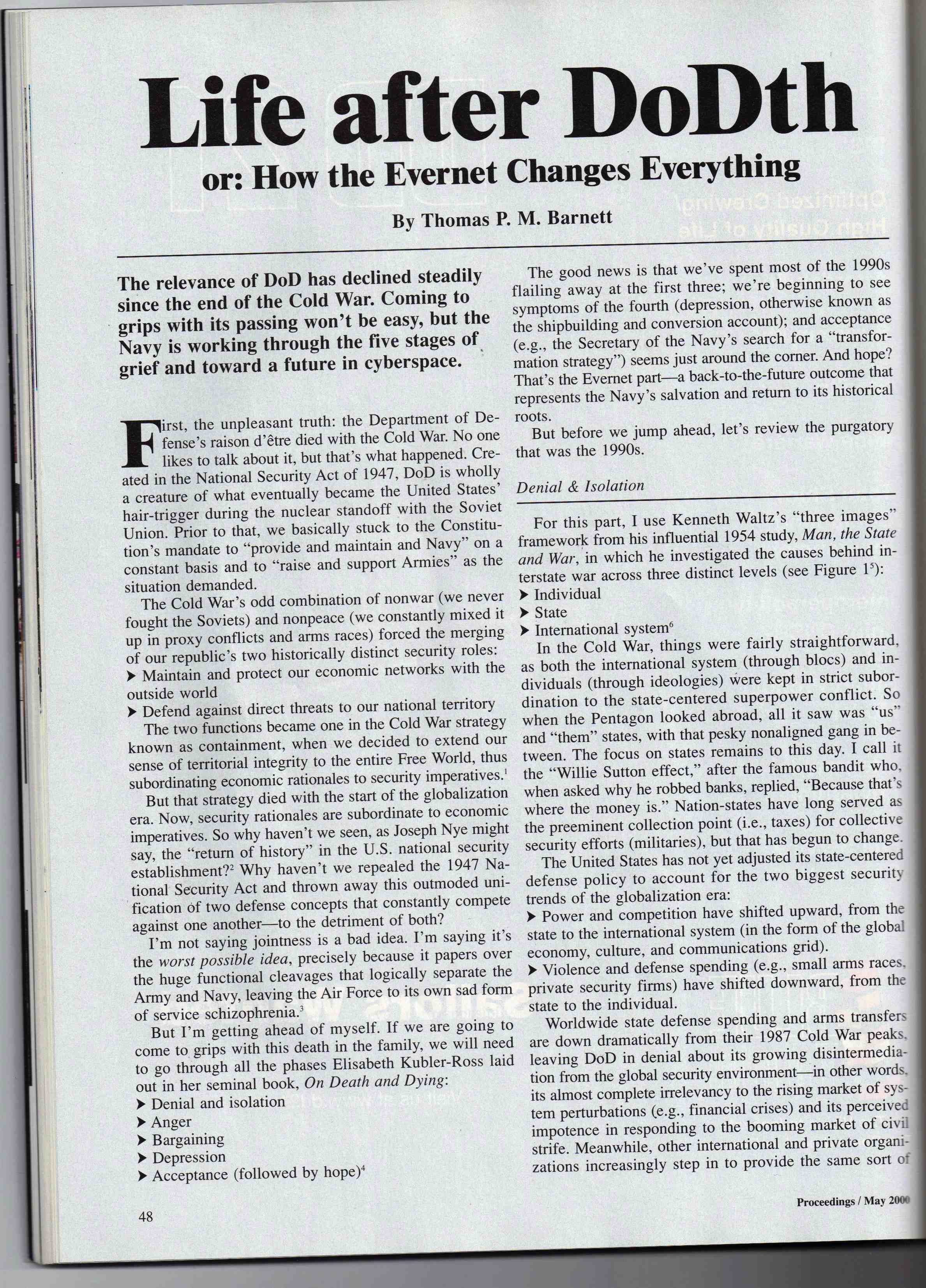
 Sunday, August 22, 2021 at 12:03PM
Sunday, August 22, 2021 at 12:03PM 








